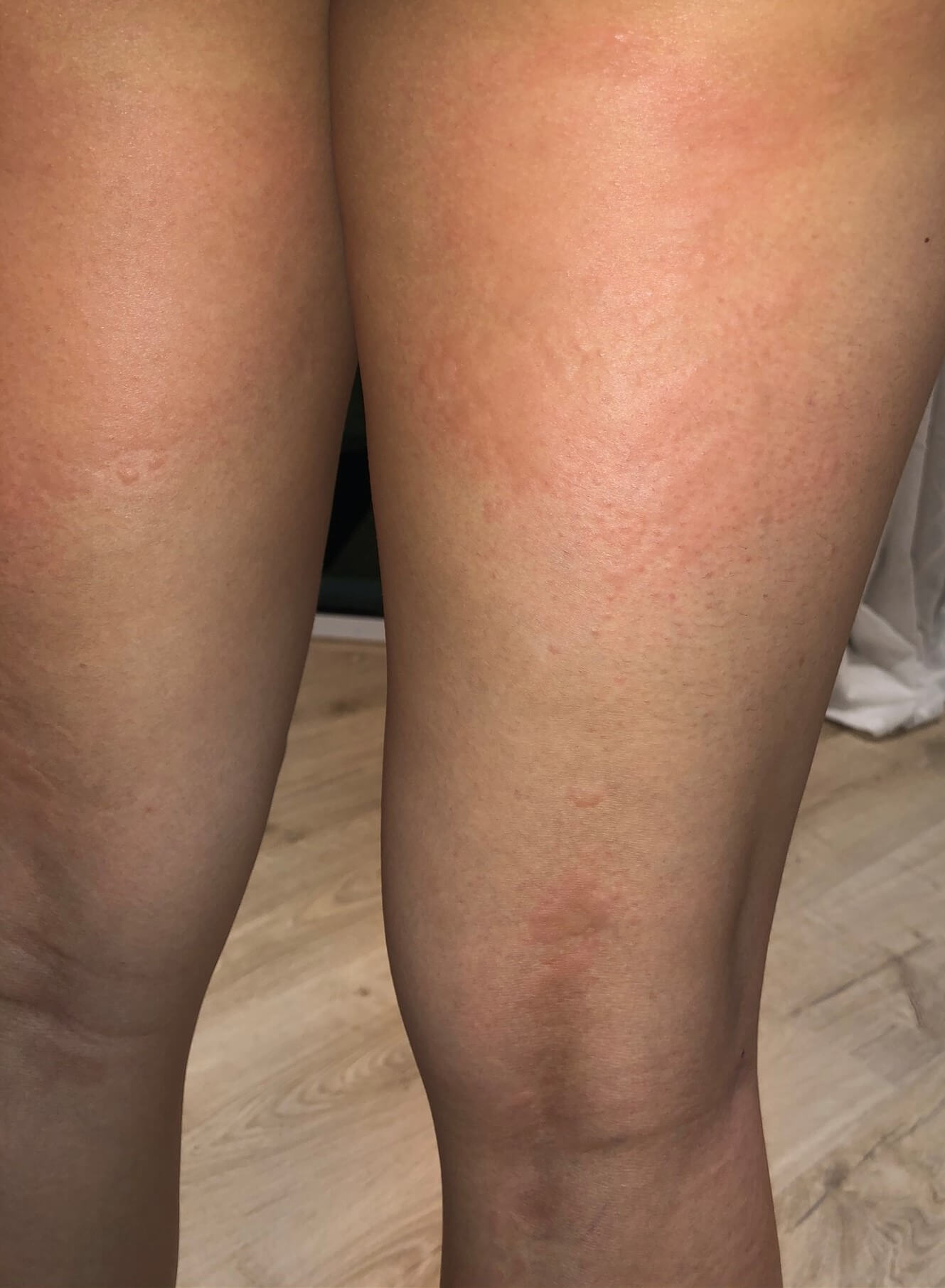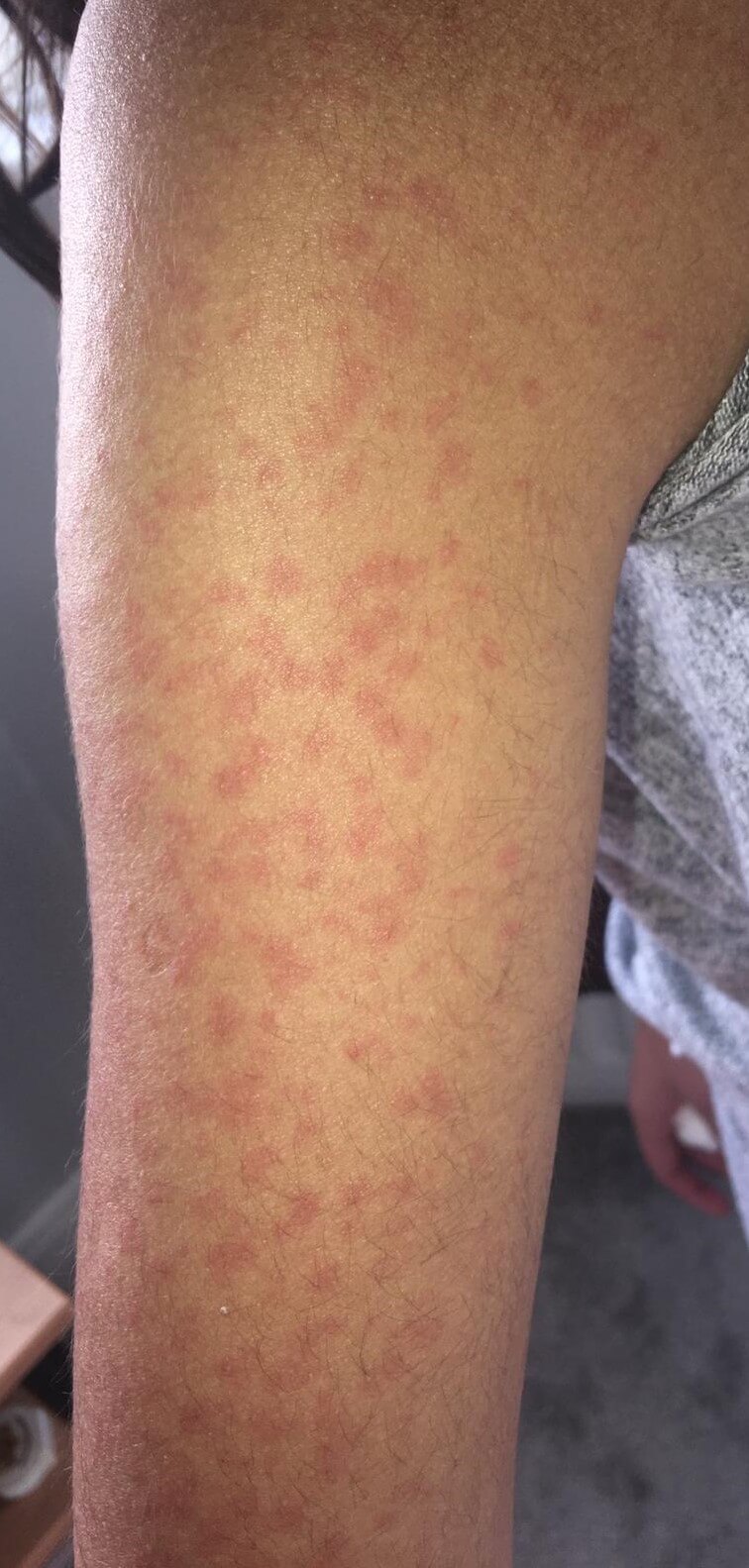
Skin rash should be considered as a fourth key sign of COVID-19
April 28, 2020
Data from the COVID Symptom Study shows that characteristic skin rashes and ‘COVID fingers and toes’ should be considered as key diagnostic signs of the disease, and can occur in the absence of any other symptoms.
The COVID Symptom Study, led by researchers from King’s College London and health science company ZOE, asks participants to log their health and any new potential symptoms of COVID-19 on a daily basis. After noticing that a number of participants were reporting unusual skin rashes, the researchers focused on data from around 336,000 regular UK app users.
Researchers discovered that 8.8% of people reporting a positive coronavirus swab test had experienced a skin rash as part of their symptoms, compared with 5.4% of people with a negative test result. Similar results were seen in a further 8.2% of users with a rash who did not have a coronavirus test, but still reported classic COVID-19 symptoms, such as cough, fever or anosmia (loss of smell).
To investigate further, the team set up a separate online survey, gathering images and information from nearly 12,000 people with skin rashes and suspected or confirmed COVID-19. The team particularly sought images from people of colour, who are currently under-represented in dermatology resources. Thank you to all who submitted photographs of their rashes.
17% of respondents testing positive for coronavirus reported a rash as the first symptom of the disease. And for one in five people (21%) who reported a rash and were confirmed as being infected with coronavirus, the rash was their only symptom.
The rashes associated with COVID-19 fall into three categories:
- Hive-type rash (urticaria): Sudden appearance of raised bumps on the skin which come and go quite quickly over hours and are usually very itchy. It can involve any part of the body, and often starts with intense itching of the palms or soles, and can cause swelling of the lips and eyelids. These rashes can present quite early on in the infection, but can also last a long time afterwards.
- ‘Prickly heat’ or chickenpox-type rash (erythemato-papular or erythemato-vesicular rash): Areas of small, itchy red bumps that can occur anywhere on the body, but particularly the elbows and knees as well as the back of the hands and feet. The rash can persist for days or weeks.
- COVID fingers and toes (chilblains): Reddish and purplish bumps on the fingers or toes, which may be sore but not usually itchy. This type of rash is most specific to COVID-19, is more common in younger people with the disease, and tends to present later on.
Examples of these rashes




Although COVID-19 is often thought of as a disease that affects the respiratory system, rashes had been reported in a number of cases of people in China and Europe who had been hospitalised with severe symptoms of the disease. However, this is the first and largest study to systematically gather data about skin rashes in milder cases in the wider population.
“Many viral infections can affect the skin, so it’s not surprising that we are seeing these rashes in COVID-19,” says study author Dr Veronique Bataille, consultant dermatologist at St Thomas’ Hospital and King’s College London.
“However, it is important that people know that in some cases, a rash may be the first or only symptom of the disease. So if you notice a new rash, you should take it seriously by self-isolating and getting tested as soon as possible.”
Commenting on the study, consultant dermatologist Dr Justine Kluk said:
“These findings highlight the importance of keeping an eye on any new changes in your skin, such as lumps, bumps or rashes. Early reporting of COVID-associated rashes by members of the public and recognition of their significance by frontline healthcare practitioners - such as GPs, NHS 111 and hospital staff - may increase the detection of coronavirus infections and help to stop the spread.”
Dr Tanya Bleiker, President of the British Association of Dermatologists, explains why these findings are important:
“Documenting the skin symptoms associated with COVID-19 is an important piece of the puzzle in building our understanding of the disease. Skin symptoms may play a crucial role in detecting infection in people who are otherwise asymptomatic."
“We’re delighted to be working with the team at KCL to make an image library of COVID-19 skin manifestations accessible on a dedicated website. This will help healthcare professionals guide their decision making in clinical settings and may have a role in educating the public about skin symptoms which would warrant self-isolation.”
The findings suggest that skin rash should urgently be added to the NHS list of official COVID-19 symptoms, along with fever, persistent cough and loss of smell (anosmia) - another symptom that was confirmed through the COVID Symptom Study data.
Additional notes:
- The study results are available online as a pre-print, and have been submitted to a scientific journal for rapid peer review and publication (Bataille et al, Diagnostic value of skin manifestation of SARS-CoV-2 infection (2020); Available from: doi: 10.1101/2020.07.10.20150656)
- The wider set of images will be made available shortly as a medical resource





.png)


.png)



















_(1).png)















.png)





